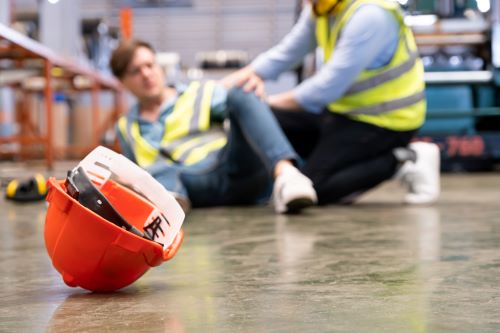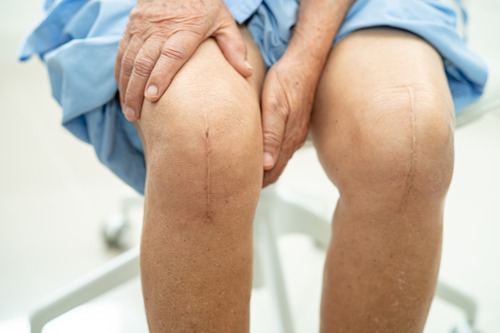Workplace injuries are an unfortunate reality for many employees across various industries. Whether you work in construction, an office setting, or manufacturing, the risk of injury is always present. From slips and falls to overexertion and exposure to harmful substances, workplace accidents can result in serious physical harm, emotional stress, and financial strain. Knowing the common types of workplace injuries and your rights as an injured employee is essential to ensuring you receive proper medical care and compensation.
In this blog, we’ll explore the most common workplace injuries, the steps you should take if you are injured, and your rights as an employee, including the importance of seeking medical care from an experienced Atlanta workplace injury doctor to ensure a smooth recovery and secure compensation.
Overexertion and Bodily Reaction
Overexertion and bodily reaction injuries are common in physically demanding jobs. These injuries occur when employees push their bodies beyond safe limits, often involving activities like lifting, pulling, pushing, or carrying heavy objects. This type of injury accounts for a significant portion of workplace incidents and can lead to long-term physical damage.
Common Industries Affected
Overexertion injuries are especially prevalent in industries that require manual labor, such as construction, manufacturing, and warehousing. Workers in these fields frequently handle heavy materials and machinery, increasing the risk of strains and other physical stress-related injuries. Proper training is critical in these environments, but even experienced workers can fall victim to overexertion when demands are high.
Types of Injuries
The most frequent workplace injuries from overexertion include muscle strains, particularly in the back and shoulders. Joint injuries, like tendonitis or bursitis, can also develop from repetitive motions or excessive physical demands. Workers may also experience more severe injuries, including hernias or chronic back pain, which can lead to long-term disability if left untreated.
Prevention Measures
Preventing overexertion injuries starts with proper training. Workers need to understand safe lifting techniques and the importance of taking regular breaks, especially during physically demanding tasks. Employers should enforce limits on how much weight workers are allowed to handle alone and provide the necessary tools or mechanical aids to reduce strain. Adequate rest periods and hydration can also help mitigate the risk.
Employee Rights
If an injured worker suffers from an overexertion injury, they are entitled to workers’ compensation benefits. This coverage includes medical expenses, lost wages during recovery, and disability benefits if the injury leads to long-term limitations. Even if the injury seems minor at first, workers should seek medical attention immediately to prevent worsening conditions and protect their right to compensation.
Slips, Trips, and Falls
Slips, trips, and falls are among the most common and potentially dangerous workplace accidents. They occur when employees lose their footing due to wet floors, obstacles, or uneven surfaces. These accidents can happen in any work environment, but they are especially prevalent in construction sites, warehouses, and offices.
Common Causes
The primary causes of slips, trips, and falls include poor housekeeping, such as cluttered workspaces, slippery surfaces from spills, and inadequate lighting. In some cases, faulty or improperly maintained equipment, like ladders or scaffolding, can also lead to accidents. The risk is heightened in high-traffic areas or jobs that require workers to move quickly in potentially hazardous conditions.
Types of Injuries
Injuries from slips, trips, and falls can range from minor to severe. Common workplace injuries include fractures, particularly in the wrists, arms, and hips, which can result from attempting to break a fall. Head injuries, including concussions or traumatic brain injuries, are also frequent and can have long-term effects on a worker’s health. Sprains and strains, especially in the knees and ankles, are other common outcomes of these accidents.
Prevention Measures
Preventing slips, trips, and falls requires diligent attention to workplace conditions. Employers should implement strict housekeeping protocols to ensure work areas are free of debris and obstacles. Hazardous surfaces should be marked clearly, and any spills must be cleaned immediately. In areas where falls from heights are possible, appropriate safety gear such as harnesses should be provided and used. Regular safety inspections and employee training can further reduce the likelihood of these incidents.
Employee Rights
Workers who are injured in slip, trip, or fall accidents are entitled to compensation under workers’ compensation laws. This compensation covers medical bills, lost wages, and disability benefits for more severe injuries. Employees should report workplace injuries immediately and seek medical attention, even for minor injuries, to ensure they are protected under the law.
Contact with Objects and Equipment
Contact with objects and equipment is a frequent cause of workplace injuries, particularly in industries that involve heavy machinery, tools, and moving materials. These injuries occur when workers are struck by falling objects, caught in machinery, or impacted by equipment malfunctions. Such incidents can lead to serious and sometimes life-threatening injuries.
Common Causes
The most common causes of these workplace injuries include improper handling of machinery, lack of proper safety guards, or poorly secured materials. Workers in construction, manufacturing, and warehousing are especially at risk due to the nature of their work environments, where heavy equipment and materials are constantly in motion. Failure to follow safety protocols or perform regular maintenance on machinery can further increase the risk.
Types of Injuries
Workplace injuries caused by contact with objects and equipment can vary widely. Common injuries include crushed limbs, often from being caught between moving parts of machinery or struck by heavy objects. Lacerations and cuts are also frequent, particularly when sharp tools or equipment are involved. In more severe cases, workers can suffer fractures, amputations, or traumatic brain injuries if struck by falling objects.
Prevention Measures
Preventing these types of injuries starts with proper training and adherence to safety protocols. Workers must be trained to operate equipment safely and be provided with protective gear, such as gloves, helmets, and eye protection. Employers should ensure that all equipment is regularly maintained and inspected for potential hazards. In addition, workspaces should be organized to minimize the risk of objects falling or machinery malfunctioning.
Employee Rights
Employees injured by contact with objects or equipment are entitled to workers’ compensation benefits through workers’ compensation insurance. These benefits cover medical expenses, lost wages, and any disability resulting from the injury. If equipment malfunction or lack of safety measures contributed to the injury, workers may also have the right to file a third-party claim against the manufacturer or other responsible parties. It is important for employees to report such injuries promptly and seek legal advice if needed to protect their rights.
Transportation Incidents
Transportation incidents are a leading cause of workplace injuries, especially for workers whose jobs involve driving or operating vehicles. These incidents can range from minor accidents to severe crashes, often resulting in significant injuries or fatalities. Employees who drive for work, such as delivery drivers, transportation workers, and those traveling for business, are at higher risk.
Common Causes
The primary causes of transportation incidents include poor road conditions, distracted driving, vehicle malfunctions, and driver fatigue. In some cases, workers may also be injured by other drivers on the road or due to inadequate vehicle maintenance. Long hours behind the wheel and tight schedules can increase the likelihood of accidents.
Types of Injuries
Injuries from transportation incidents often involve whiplash, fractures, and internal injuries from the force of collisions. Broken ribs, arms, and legs are common, as are head injuries, which can range from concussions to more severe traumatic brain injuries. In serious accidents, workers may also suffer permanent disabilities or require long-term rehabilitation.
Prevention Measures
Preventing transportation-related injuries involves a combination of safe driving practices and proper vehicle maintenance. Employers should ensure that vehicles used for work are regularly inspected and maintained. Workers should be trained on defensive driving techniques and encouraged to take breaks to avoid fatigue. Employers can also implement policies that limit driving hours and enforce seatbelt use to enhance safety. According to the National Safety Council, transportation incidents are a leading cause of workplace injuries, costing employers billions annually.
Employee Rights
Workers injured in transportation incidents are covered under workers’ compensation, which provides for medical expenses, lost wages, and disability benefits. In cases where another party is at fault, such as in a collision caused by another driver, workers may be able to pursue additional compensation through a third-party claim. Employees should report accidents immediately and follow all medical recommendations to secure their rights to compensation.
Exposure to Harmful Substances or Environments
Exposure to harmful substances or environments is a significant risk in many workplaces, especially in industries like manufacturing, construction, and chemical processing. Workers may encounter hazardous chemicals, extreme temperatures, or harmful levels of noise, all of which can cause serious health problems over time or even lead to immediate injury.
Common Causes
The most common causes of harmful exposure include inadequate ventilation, improper handling of chemicals, and failure to provide or enforce the use of personal protective equipment (PPE). Workers might be exposed to toxic fumes, dust, or other airborne contaminants in poorly controlled environments. Additionally, extreme heat or cold, as well as continuous exposure to loud machinery, can result in long-term health issues.
Types of Injuries
Workplace injuries from exposure to harmful substances can range from immediate reactions, such as chemical burns and respiratory issues, to long-term conditions like chronic lung disease, hearing loss, or skin conditions. Workers exposed to hazardous chemicals without proper protection may also suffer from poisoning, while prolonged exposure to extreme temperatures can lead to heat stroke or frostbite.
Prevention Measures
Preventing injuries from exposure requires strict adherence to workplace safety regulations and proper use of protective equipment. Employers should ensure that all workers are trained to handle hazardous materials safely and are provided with the necessary PPE, such as gloves, masks, and protective clothing. Regular monitoring of air quality, noise levels, and environmental conditions is essential, along with enforcing strict protocols for working in extreme conditions.
Employee Rights
Employees who suffer from injuries or illnesses due to harmful exposure are entitled to workers’ compensation. This includes coverage for medical treatment, lost wages, and any temporary or permanent disability caused by the exposure. In cases where the exposure is due to negligence, such as failure to provide proper safety equipment, workers may have the right to file additional claims against responsible parties. Employees must document their exposure and seek medical attention as soon as symptoms arise to protect their rights.
Seek Care With an Experienced Workplace Injuries Doctor Today!
If you’ve been injured on the job, don’t wait to seek medical treatment and get the care and support you deserve. Our team at Georgia Spine & Orthopaedics specializes in treating workplace injuries and helping employees recover quickly and safely. Whether you need diagnosis, treatment, or documentation for your workers’ compensation claim, we are here to assist you every step of the way.
Contact us at 678-929-4494 today to schedule an appointment!






